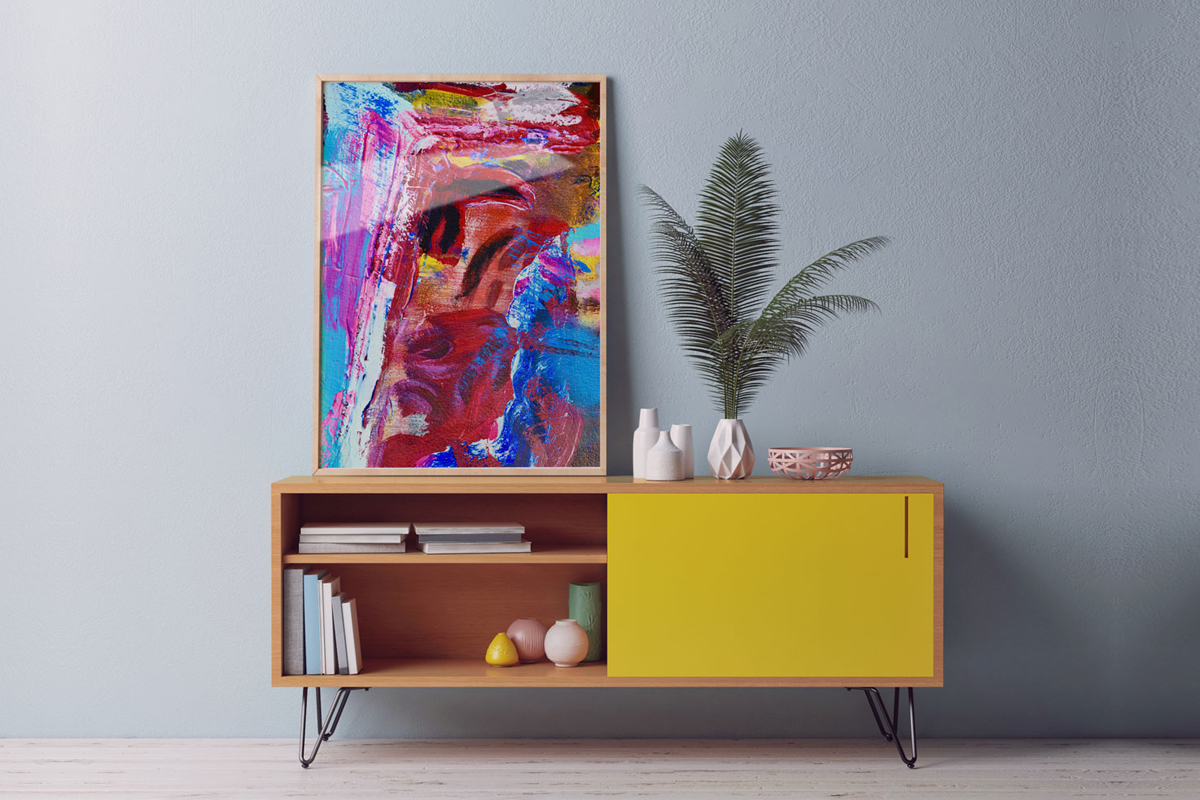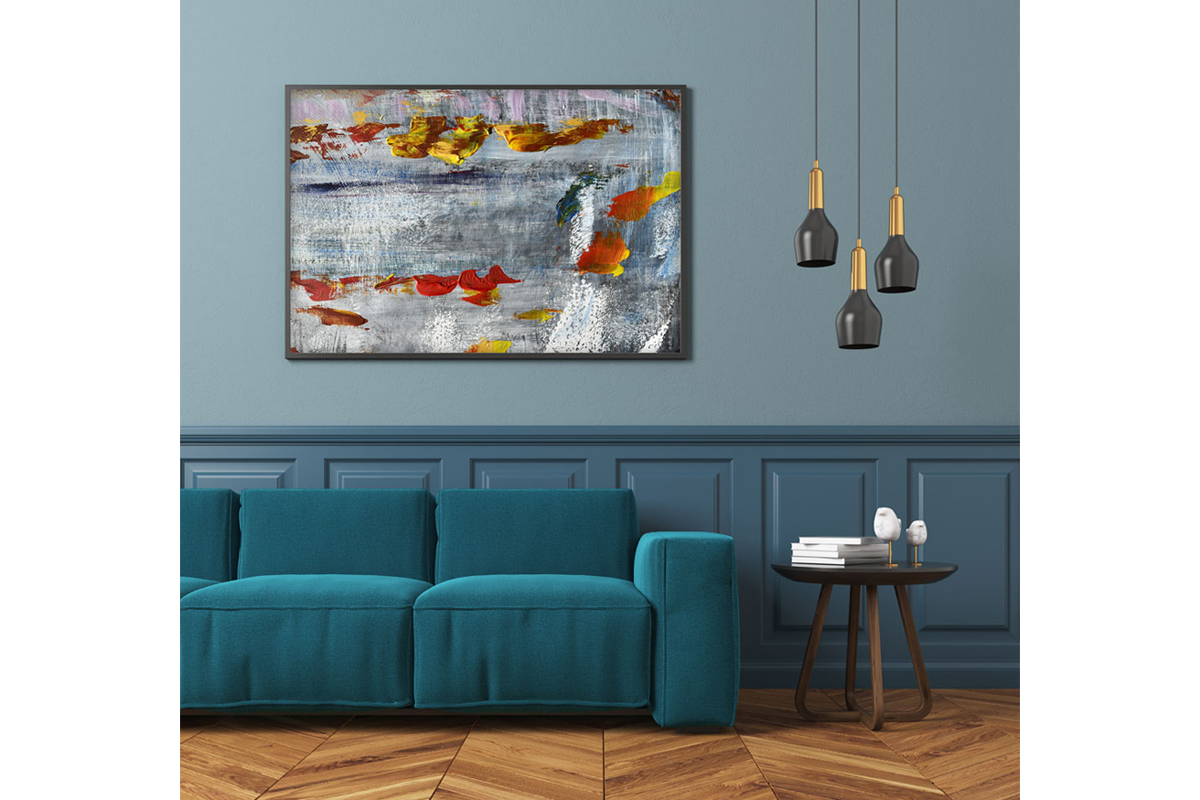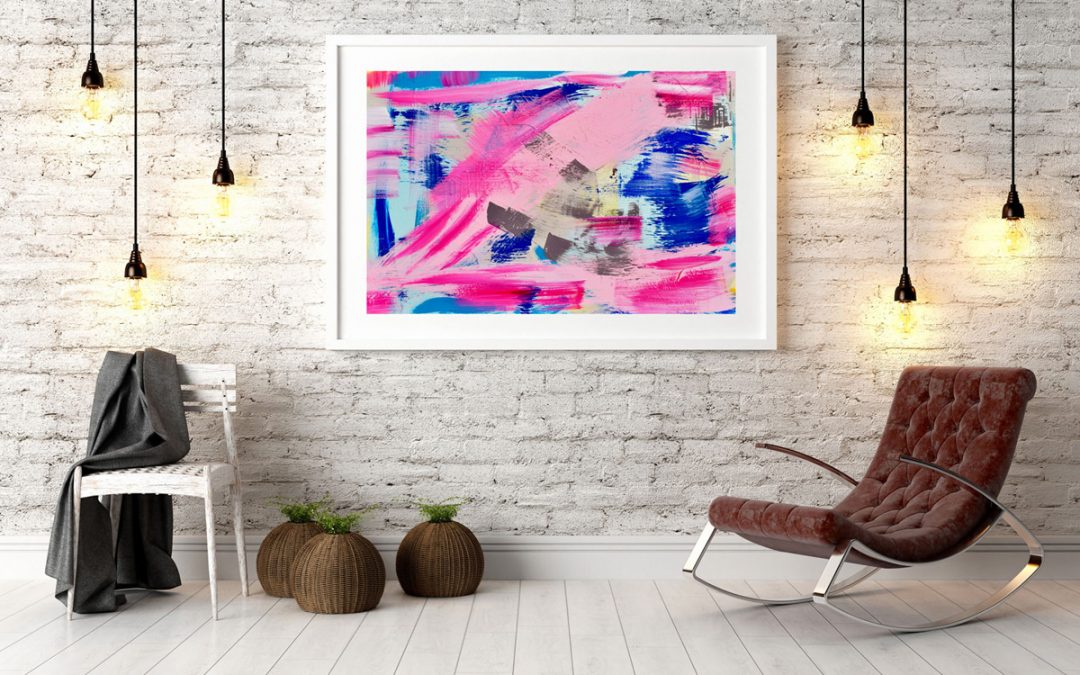Following on from my previous posts advising How To Buy Art and How To Frame Your Artworks, I’ll cover thinking around hanging and displaying your pieces in this post.
Here’s how to hang and display art –
What do I need to get started?
Shop for the right tools and bits. A hammer and tape measure are essential, and you’ll also need picture hanging hooks, nails, d-rings and string.
Plan your display before hanging. Scale drawings might be helpful? Or even just placing the relevant pieces on the floor, just below where they will hang.
Where in my home should I hang art?
As well as living spaces and sleeping quarters, hanging art on stairs is becoming increasingly popular. Art displayed on a hall area, or stairway can create the illusion of the space appearing more extensive than it is.
Displaying art should be a dynamic and flexible process. Art can move from room to room and adapt to fit with how you use spaces. Experiment, try different setups and arrangements.
Be careful of humidity and heat or temperature changes. Hanging over a radiator or in a bathroom or kitchen could be risky.

A linear or irregular display?
This will depend on the overall shape of the wall you’re hanging on and the overall look of the space. It’s best to treat the home as a home – not as a gallery.
More rigid and grid-like patterns can work for some spaces. Irregularity, which is increasingly becoming more popular, will be more appropriate for others.
It’s best to choose a focal point to a space or wall, then arrange your art in harmony from there.
Leaving some walls in a room empty of artworks is a good idea.
How many pieces per wall?
Don’t overcrowd. Overcrowding will limit the amount of impact that each piece make. Key, more standout pieces could hang alone? Could other pieces be displayed in relevant groups?
What height should I hang pieces at?
Gallery guidelines suggest 156cms from the floor to the centre of the pice. You’ll want to adapt this depending on the overall look and size of the space you’re hanging in.

How important is the light in a room?
Light is crucially important. It’s best not to hag art directly facing UV rays as they will damage and fade the piece over time.
Interior lighting can be used to highlight selected pieces. For example, spotlights could be angled to light a wall around a key piece.
Trust your instincts. Go with what you like and how good something looks in your space.

